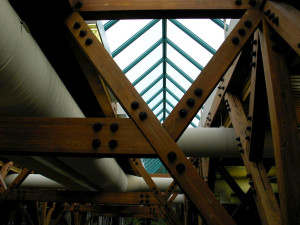HVAC – An Ounce of prevention
It is a bitterly cold November day in San Diego, with a high of roughly 70 as I sit here writing this. Heating, Ventilation, & Air Conditioning (HVAC) systems may seem like a strange topic for me to write on, this being sunny San Diego and all that. However, all our clients’ buildings have heating systems and many, especially those built since the 1980’s, have air conditioning. The truth is that because of their infrequent use, our HVAC systems in southern California require even more careful attention than the same systems elsewhere might. So what should you do to keep your HVAC system in the best shape? Here are some tips.
Test Before You Need It
There is nothing better than going to turn the heat or air on for the first time in a season and discovering that something is not working. Test the system for heating and cooling before it is required. The easiest way to test your system is at your thermostat. Simply change the demand setting and make sure the system turns on and produces either hot or cold air. Doing this before it gets hot or cold enough to need the system will usually mean that service contractors are available to respond quickly; waiting until everyone else realizes their system is not working inevitably means you will be waiting in line.
Service
You cannot run your car without the occasional trip to a mechanic to have fluids like oil changed, tires rotated, and belts adjusted. Your HVAC equipment is the same; it requires period lubrication and adjustment to run efficiently. A side benefit is that a well maintained unit will also operate more efficiently. Units benefit from quarterly service. At the very least, they certainly need to be checked and maintained annually.
Filters
Filters need to be replaced periodically in order to allow air to flow through them efficiently and effectively. Do a simple test: take a finger and push one side of your nose closed. Continue to breathe normally. Notice a difference? Dirty filters make your HVAC unit work harder to heat and cool your space, which increases your operating cost and also increases the wear on your equipment. How often filters need changed will vary on amount of use and location, but a good rule of thumb is to change filters quarterly.
Pilot Lights
Gas-fired equipment will either have a manual or an electronic ignition pilot light that is used to fire up the full heating element. Pilot lights need to be cleaned and adjusted periodically, usually annually, to ensure that they are working properly and burning cleanly. Many utility companies offer this service free of charge, but it should be on your annual maintenance checklist.
Check the Lines
Visually inspect the coolant lines quarterly to make sure everything looks right. If you notice corrosion, build up, or other issues, call out a HVAC mechanic to check things over. Also, check to make sure your condensate pan, drain line, and the inlet are clear of debris and draining properly. This should also be done quarterly to prevent an unexpected flood.
Check the shut offs
Visually inspect your gas and electrical shut off switches and valves. In fact, test them (called exercising) at least quarterly to make sure they will work if you ever need them to. There is nothing worse than needing to shut off the power or gas and not being able to because something is rusted open.
Get Professional Help
We recommend that our clients enter into service contracts for quarterly maintenance, but some of our clients change their own filters and do some HVAC maintenance themselves. I am always in favor of the work getting done, regardless of who does it; but make sure you know your limits or the limits of your maintenance team so you can arrange for professional assistance when required. Better to pay a little for service to be done regularly and properly than to pay to have something replaced.

